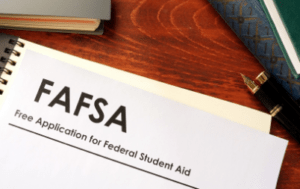Even families that earn much sometimes seek help. The same trend of mindset dwells among families with college-bound kids to fill out the Free Application for Federal Student Aid (FAFSA) .

WHAT YOU SHOULD KNOW
- Firstly, since most families are eligible for some form of federal financial aid for college, check out for your eligibility by filling out the form.
- Secondly, even with that your exceptional financial need, you may be eligible for federal grants and subsidized loans.
- Also, there are also chances that some families are eligible for unsubsidized federal loans.
What Is the FAFSA?
Firstly, the FAFSA is a form that enables families to apply for financial assistance for college from the federal government. Most states, down to individual colleges and universities make use of the information to figure out the qualifications.
Also, the elementary purpose of the FAFSA is to find how much financial aid you qualify for, (need-based and non-need-based aid).
How Does the FAFSA Work?
Usually, the purpose of FAFSA is to determine the financial need of a family through a series of questions concerning the parents’ and student’s income and assets and many more factors that facilitate the process. Afterward, the government determines the cost of college the family should be able to pay with its own resources. This is repackaged as Expected Family Contribution.
Furthermore, note that the assets required by FAFSA include bank accounts, life insurance policies, and annuities.
Moreso, you will be approved based on the information you supplied on the FAFSA. There are two basic parts you can qualify for FAFSA which are need-based aid and non-based aid or qualify for both.
Check out for the programs that require filling out the FAFSA below:
Need-Based Financial Aid
Federal Pell Grants
Usually, the most financial aid that attracts FAFSA is Grant because it calls for no repayment. Pell Grants is a federal grant desired for college who are with exceptional financial need. Pell Grant is awarded to undergrads and to some teacher certification programs. On this ground, the University’s financial aid office determines how much money students qualify with respect to the EFC of the family.
Federal Supplemental Educational Opportunity Grants
Secondly, this is also a federal grant that does not require to be repaid but it is especially available at certain schools. It offers up to $100 to $4,000 per year. This is designed for students with fewer resources to draw on.
Federal Direct Subsidized Loans
Also, this is a subsidized loan which entails that the interest in them will be handled by Uncle Sam while the student is still in school and down to the grace period of six months after they graduate. Usually, it offers a loan amount ranging from $5,500 to $12,500 per year currently. This also depends on the year in school and if such a student is classified as an independent or independent student. Thus, this is not offered to graduate students.
Federal Work-Study
This program supports paid part-time jobs through participating colleges and universities. It is open to graduate and undergraduate students who are eligible.
Note:
Usually, Federal loans are flexible in discerning their repayment options compared to private loans.
Non-Need-Based Financial Aid
Direct Unsubsidized Loans.
The opposite of subsidized loans is unsubsidized loans. Here, the government doesn’t take the responsibility of paying the loan. Interest while the student is in school neither during the six months grace period. The interest should be paid over the schooling period or it will be added to the principal of the loan.
Most offers of Direct Unsubsidized loans take on without financial aid package not minding the state of the finance of the family. The dependent students will be able to unlock the maximum of $31,000 for undergraduate
Federal PLUS Loans
Lastly, Federal plus Loans are designed for parents or graduate students. There is no room for subsidization by the government. The result of not being a subsidized loan is that the interest accrues over school years will be added to the principal.
from WordPress https://ift.tt/35gCwzG
No comments:
Post a Comment